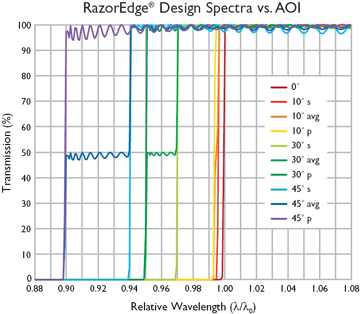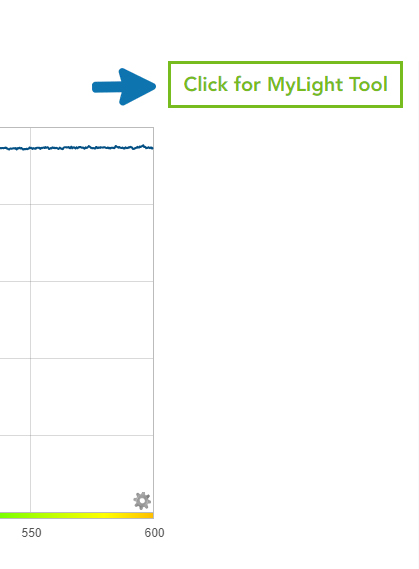

Optical Filters FAQs
Here we have provided comprehensive lists of commonly asked questions regarding our Semrock optical filters and related applications. This information is designed to support your inquiries, but if you don’t find the answers you are looking for we encourage you to contact us for further assistance.
Please use the sort buttons in the left navigation to navigate between questions and answers that are specific to Optical Imaging Systems, Fluidics, Cameras, Microfluidics, our Webstore, and Engineering Partnership.
What is angle tuning?
The spectrum of any thin-film filter shifts toward shorter wavelengths when the angle of incidence (AOI) of light upon the filter is increased from 0° (normal incidence) to larger angles. In most cases, the filter spectrum becomes highly distorted at larger angles, and the shift can be significantly different for s- and p-polarized light. The spectral shift that you experience is highly dependent upon filter design. To learn more about how angle tuning affects the spectral performance of different Semrock filters, please review our technical note: Filter Spectra at Non-normal Angles of Incidence.
VersaChrome® Tunable Bandpass Filters
VersaChrome filters are a revolutionary new optical filter technology: thin-film filters that are tunable over a wide range of wavelengths by adjusting the angle of incidence with essentially no change in spectral performance. More information about tunable filters can be found in our technical library.
If you have further questions about a specific application, please contact technical support for assistance.
MyLight™
Try angle tuning yourself, by using MyLight™. Select your filter and click on the blue "MyLight" button above the spectra to model the theory data at whatever angle you desire.

